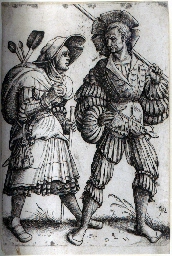I've been intrigued by Titan ever since I read Imperial Earth by Arthur C. Clarke.
They're a bunch of degenerates who think the country belongs to them alone.
Raja Rani Vase- unknown Jaipurite artisans, Jaipur blue pottery (19th century)


> The use of blue glaze on pottery is an imported technique, first developed by Mongol artisans who combined Chinese glazing technology with Persian decorative arts. This technique traveled east to India with early Turkic conquests in the 14th century. During its infancy, it was used to make tiles to decorate mosques, tombs and palaces in Central Asia. Later, following their conquests and arrival in India, the Mughals began using them in India. Gradually the blue glaze technique grew beyond an architectural accessory to Indian potters. From there, the technique traveled to the plains of Delhi and in the 17th century went to Jaipur.
You should read this, it answers your question.
Mountainous River Landscape with Travelers- Tobias Verhaecht, oil on panel (early 17th century)


> Tobias Verhaecht (1561–1631) was a painter from Antwerp in the Duchy of Brabant who primarily painted landscapes. His style was indebted to the mannerist world landscape developed by artists like Joachim Patinir and Pieter Bruegel the Elder. He was the first teacher of Pieter Paul Rubens.
Page 13 of the Codex Borbonicus- Unknown Aztec artist, pigment on amate paper (c. 16th century)

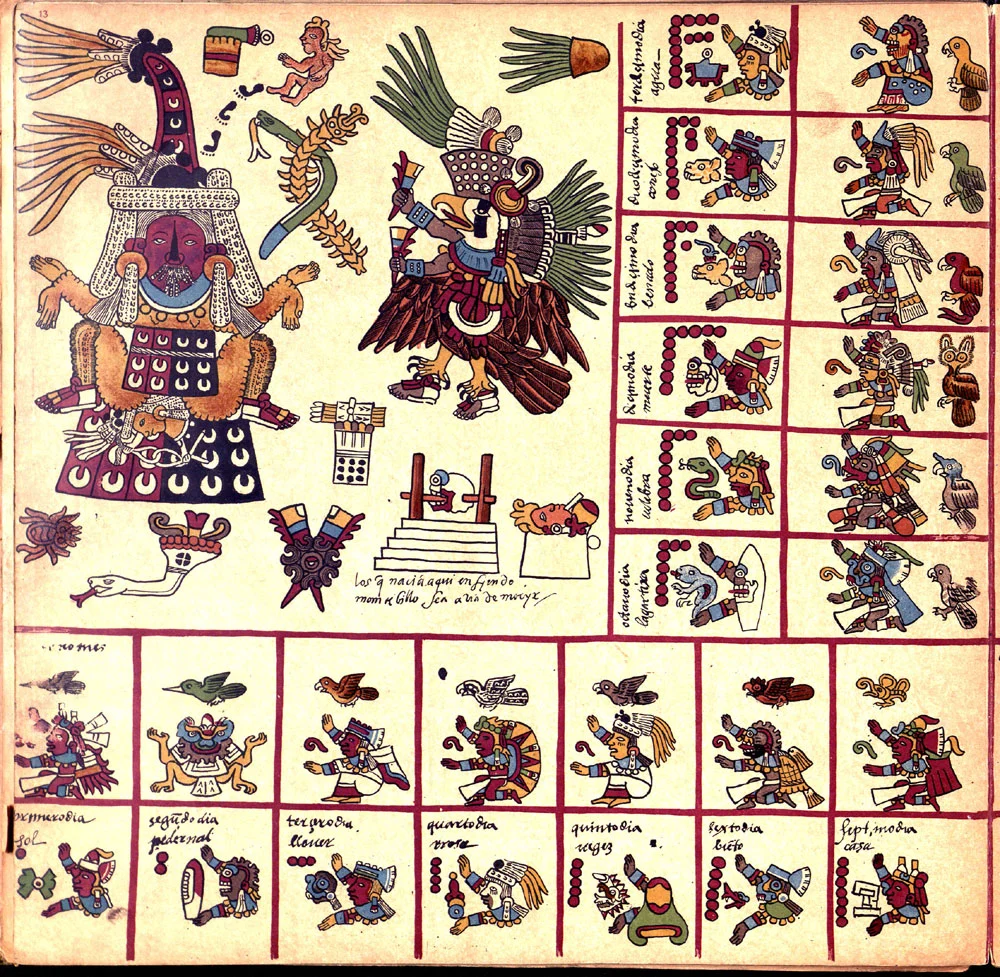
> The original page 13 of the Codex Borbonicus, showing the 13th trecena of the Aztec sacred calendar. This 13th trecena was under the auspices of the goddess Tlazolteotl, who is shown on the upper left wearing a flayed skin, giving birth to Cinteotl. The 13 day-signs of this trecena, starting with 1 Earthquake, 2 Flint/Knife, 3 Rain, etc., are shown on the bottom row and the right column. > > The Codex Borbonicus is one of a very few Aztec codices that survived the colonial Spanish inquisition. When the Spanish conquistadors (led by Hernán Cortés) entered Aztec cities, they would often find libraries filled with thousands of native works. However, most of the works were destroyed during the conquest as a means to hasten the conversion of the Aztec to European ideals.
I think the city of Rome in late antiquity or the middle ages would be an incredible RPG setting.
Maybe I'll put something together for a TTRPG sometime.
There is no inherent meaning; everyone must find their own.
For me, it's to try and leave my little patch of the world better than I found it.
Run it from Steam and use Steam input to map the controls. It works great.
If only public opinion mattered more than billionaire lobbying.
Cruz said, "there are many, many wonderful, wonderful working men and women in the state of New York, but everyone understands that the values in New York City are socially liberal or pro-abortion or pro- gay-marriage, [and] focus around money and the media.”
Said the podcast host who is begging billionaires for money. Fuck this waste of skin.
I live in the Bible belt and can tell you: the evangelical megachurches are chock full of Christian nationalists.
Sure, there are factions in the GOP that don't really care about religion , but the SCOTUS wouldn't have overturned Roe if the hardcore religious zealots didn't work for decades to get it done.
The protesters at abortion clinics were bussed there by the churches a lot of the time; they're not outliers here. They are the engine that runs the party here in Texas. They have all kinds of excuses as to why Trump is doing God's will despite being a terrible human being.
Doing full co-op with a randomizer is a blast.
Why?
Some of the worst people I've ever known were from when I had to go.
So much of forensics is cargo-cult "science" that starts with a conclusion and works backwards to prove it. Furthermore, the analysis is frequently subjective and without a control.
Here is an article on ballistics testing in particular that highlights some criticisms.
L’Amans Dreams He Rises and Dresses, from Roman de la Rose- Unknown artist, tempera on manuscript (15th century France)

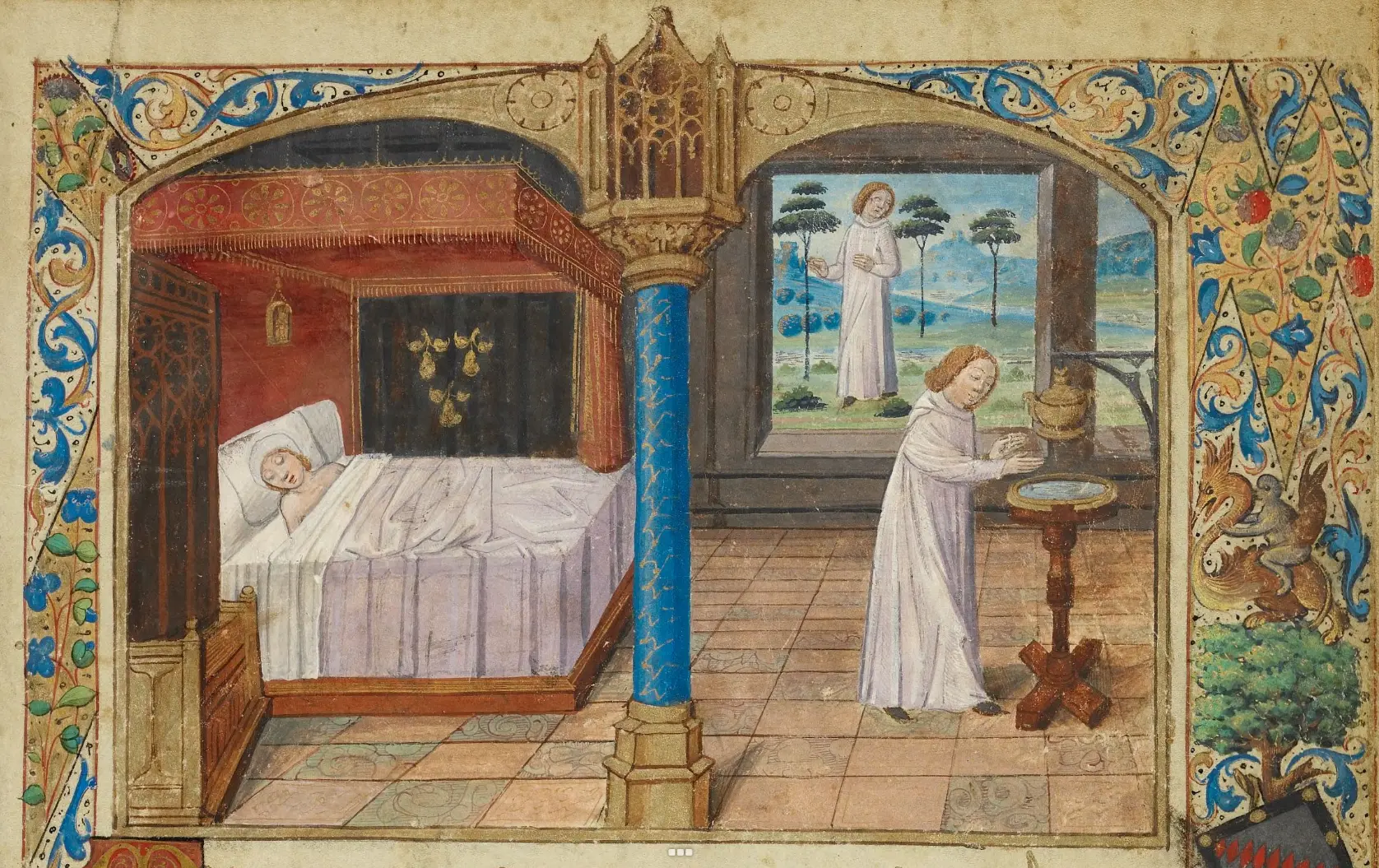
> Le Roman de la Rose (The Romance of the Rose) is a medieval poem written in Old French and presented as an allegorical dream vision. As poetry, The Romance of the Rose is a notable instance of courtly literature, purporting to provide a "mirror of love" in which the whole art of romantic love is disclosed. Its two authors conceived it as a psychological allegory; throughout the Lover's quest, the word Rose is used both as the name of the titular lady and as an abstract symbol of female sexuality. The names of the other characters function both as personal names and as metonyms illustrating the different factors that lead to and constitute a love affair. Its long-lasting influence is evident in the number of surviving manuscripts of the work, in the many translations and imitations it inspired, and in the praise and controversy it inspired. > >The Romance of the Rose was both popular and controversial. One of the most widely read works in France through the Renaissance, it was possibly the most read book in Europe in the 14th and 15th centuries. Its emphasis on sensual language and imagery, along with its supposed promulgation of misogyny, provoked attacks by Jean Gerson, Christine de Pizan, Pierre d'Ailly, and many other writers and moralists of the 14th and 15th centuries. The historian Johan Huizinga has written: "It is astonishing that the Church, which so rigorously repressed the slightest deviations from dogma of a speculative character, suffered the teaching of this breviary of the aristocracy (for the Roman de la Rose was nothing else) to be disseminated with impunity."
The entire manuscript can be viewed online here.
Improved Gyro To Mouse behavior when connected over bluetooth.
Wish they added more details; this could be big or not much at all.
Watterson really is the GOAT comic strip illustrator. Lots of great panels in this one.
Here is an article with some good examples of the racist shit PragerU slops around like an incontinent hippo.
"Calling me a liar is a violation of my free speech! You can't say that!"
Scarlet macaw (captioned as Macrocercus Aracanga, red and yellow macaw)- Edward Lear, color lithograph (1832)


> Lear's illustrations were produced using lithography, in which artists copied their paintings onto a fine-textured limestone slab using a special waxy crayon. The block was then treated with nitric acid and gum arabic to etch away the parts of the stone not protected by the wax. The etched surface was wetted before adding an oil-based ink, which would be held only by the greasy crayon lines, and copies were printed from the stone. The printed plates were hand-coloured, mainly by young women. > > Lear drew directly on to the limestone instead of first making a painting and then copying it onto the stone, thus saving him considerable expense. Although this method was technically more difficult, drawing directly onto stone could give a livelier feel to the final illustration, and was favoured by some other contemporary bird artists such as John Gerrard Keulemans. Lear largely taught himself lithographic techniques, using stones hired at the studio of his printer, Charles Joseph Hullmandel. Hullmandel was the author of The Art of Drawing on Stone (1824), and the leading exponent of lithographic printing in Britain. His colourists used egg white to give a sheen to the parrot's plumage and a shine to the bird's eye.
"When a cop tells you to do something, you do it. That's it."
What a chode. When the constitution tells cops they need a warrant they should get one.
The right of the people to be secure in their persons, houses, papers, and effects, against unreasonable searches and seizures, shall not be violated, and no Warrants shall issue, but upon probable cause, supported by Oath or affirmation, and particularly describing the place to be searched, and the persons or things to be seized.
Every cop there should be charged with deprivation of rights under color of law, but I won't hold my breath.
And to get, apparently.
A Famous Motive- Honoré Daumier, oil on canvas (1862-65)

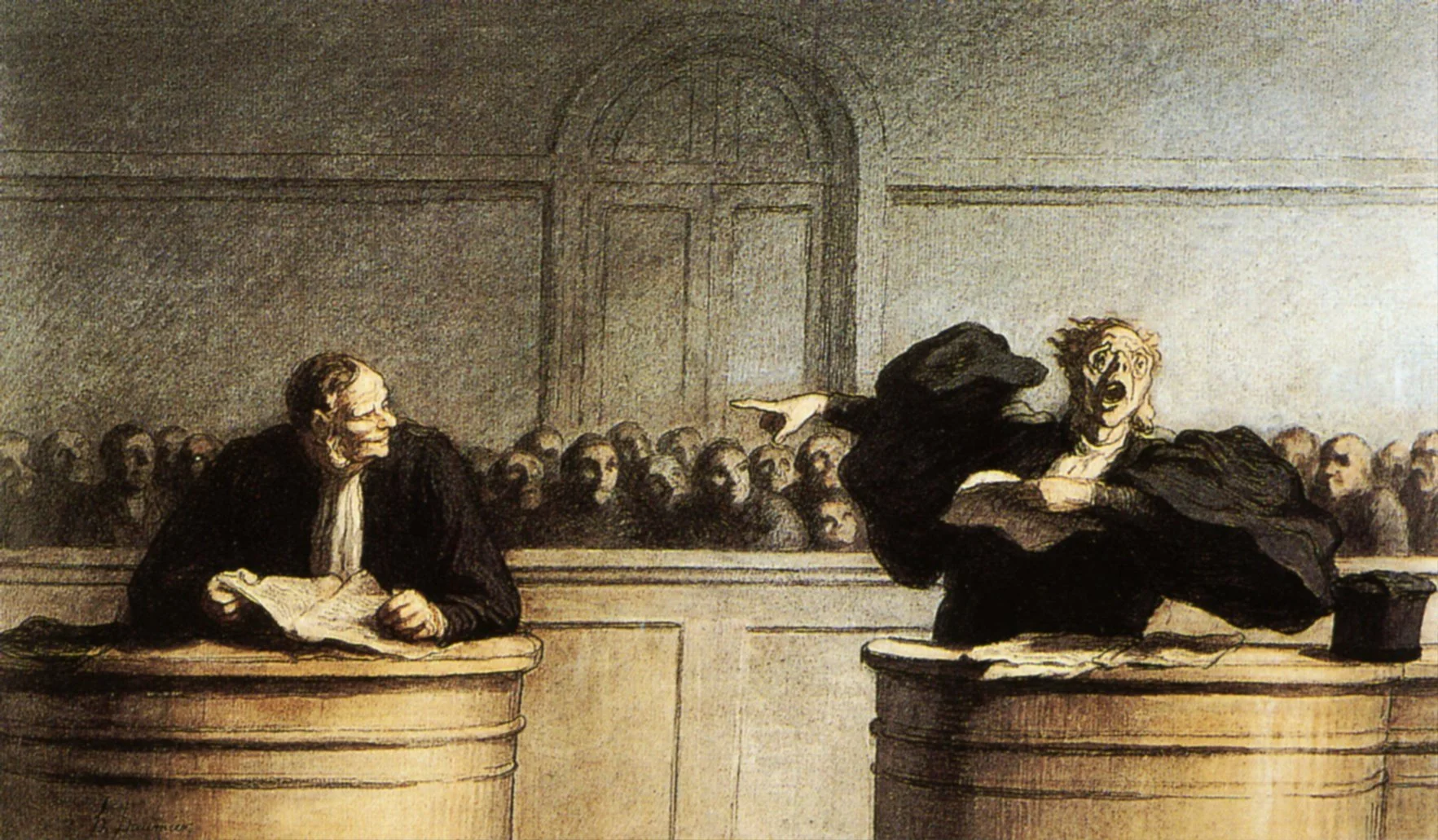
> Honoré-Victorin Daumier was a French painter, sculptor, and printmaker, whose many works offer commentary on the social and political life in France, from the Revolution of 1830 to the fall of the second Napoleonic Empire in 1870. He earned a living producing caricatures and cartoons in newspapers and periodicals such as La Caricature and Le Charivari, for which he became well known in his lifetime and is still remembered today. He was a republican democrat (working class liberal), who satirized and lampooned the monarchy, politicians, the judiciary, lawyers, the bourgeoisie, as well as his countrymen and human nature in general.
Do you really think subjugation of women improves these people?
There are plenty of Christians who don't do that; I have no problem with humanist Christians.
I have a huge problem with reactionaries who use their religion to oppress others. You should learn the difference.
Standing Buddha from Gandhara- unknown artist, carved stone (1st or 2nd century CE)

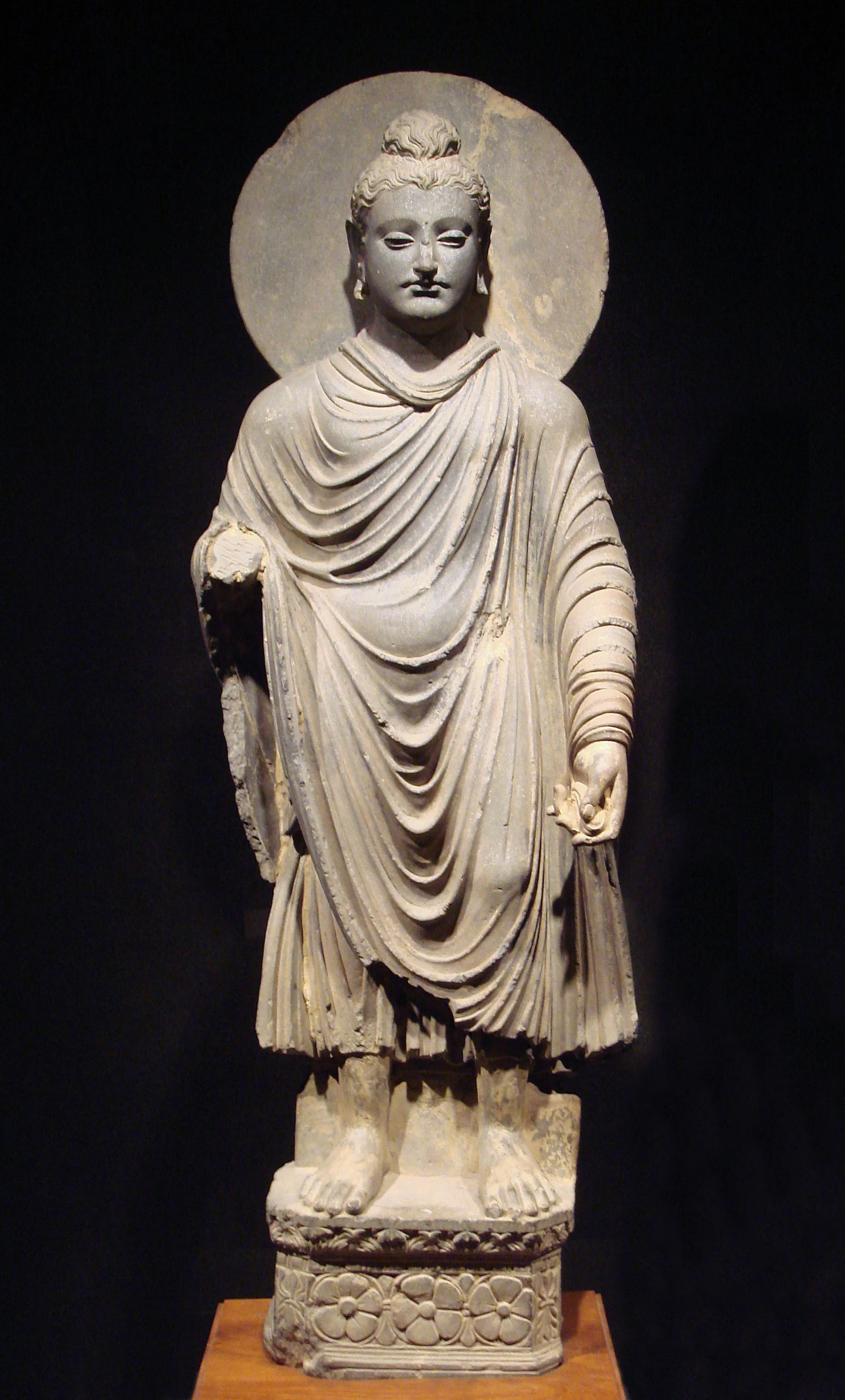
A very early depiction of the Buddha.
The Orchestra of the Opera- Edgar Degas, oil on canvas (1870)

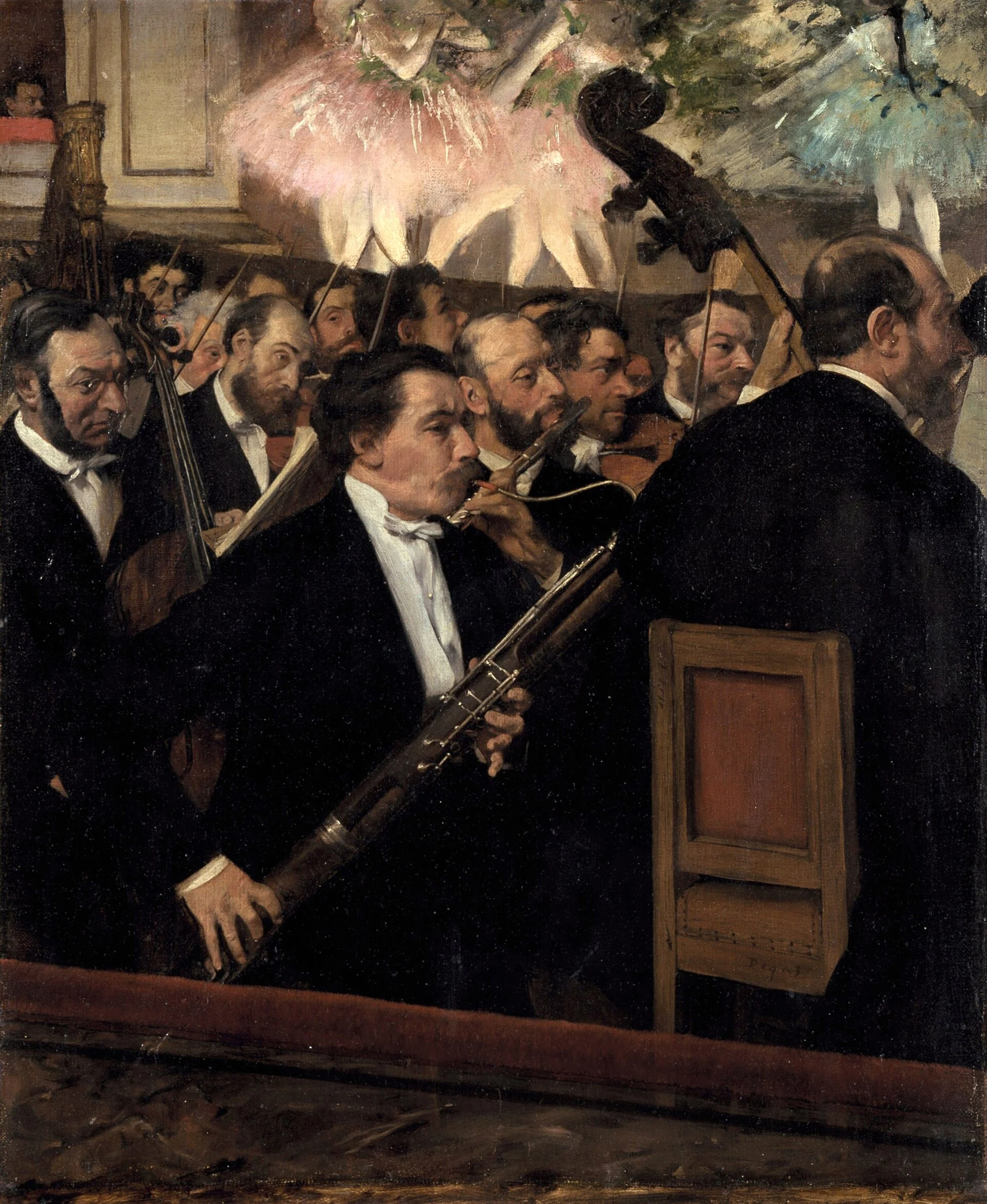
> For all the stylistic evolution, certain features of Degas's work remained the same throughout his life. He always painted indoors, preferring to work in his studio from memory, photographs, or live models. The figure remained his primary subject; his few landscapes were produced from memory or imagination. It was not unusual for him to repeat a subject many times, varying the composition or treatment. He was a deliberative artist whose works, as Andrew Forge has written, "were prepared, calculated, practiced, developed in stages. They were made up of parts. The adjustment of each part to the whole, their linear arrangement, was the occasion for infinite reflection and experiment." Degas explained, "In art, nothing should look like chance, not even movement". He was most interested in the presentation of his paintings, patronizing Pierre Cluzel as a framer, and disliking ornate styles of the day, often insisting on his choices for the framing as a condition of purchase.
"Etchings" Euphemism
> The phrase "Want to come up and see my etchings?" is a romantic euphemism by which a person entices someone to come back to their place with an offer to look at something artistic, but with ulterior motives. The phrase is a corruption of some phrases in a novel by Horatio Alger Jr. called The Erie Train Boy, which was first published in 1891.
Phases of the Moon- Galileo Galilei, brown ink and wash on paper (c. 1609)

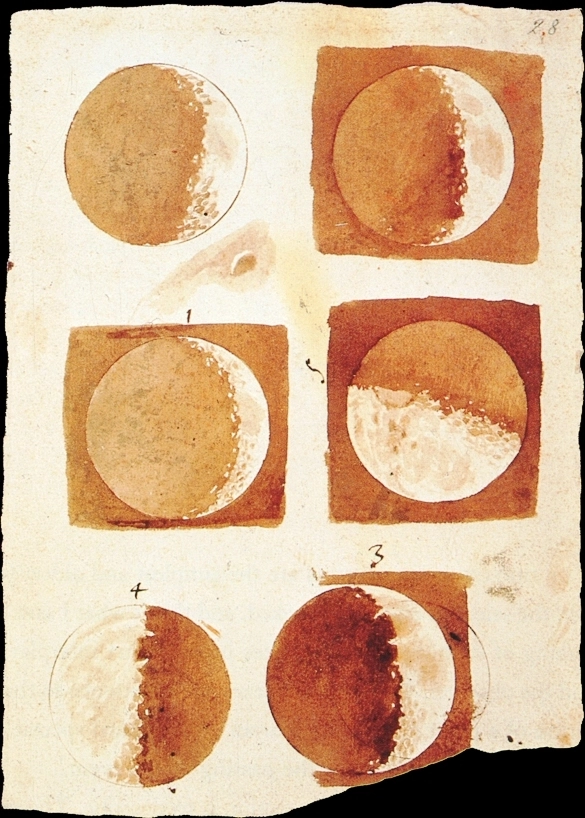
> Galileo studied speed and velocity, gravity and free fall, the principle of relativity, inertia, projectile motion and also worked in applied science and technology, describing the properties of the pendulum and "hydrostatic balances". He was one of the earliest Renaissance developers of the thermoscope and the inventor of various military compasses, and used the telescope for scientific observations of celestial objects. With an improved telescope he built, he observed the stars of the Milky Way, the phases of Venus, the four largest satellites of Jupiter, Saturn's rings, lunar craters and sunspots. He also built an early microscope.
Five Landsknechte- Daniel Hopfer, etching (1530)

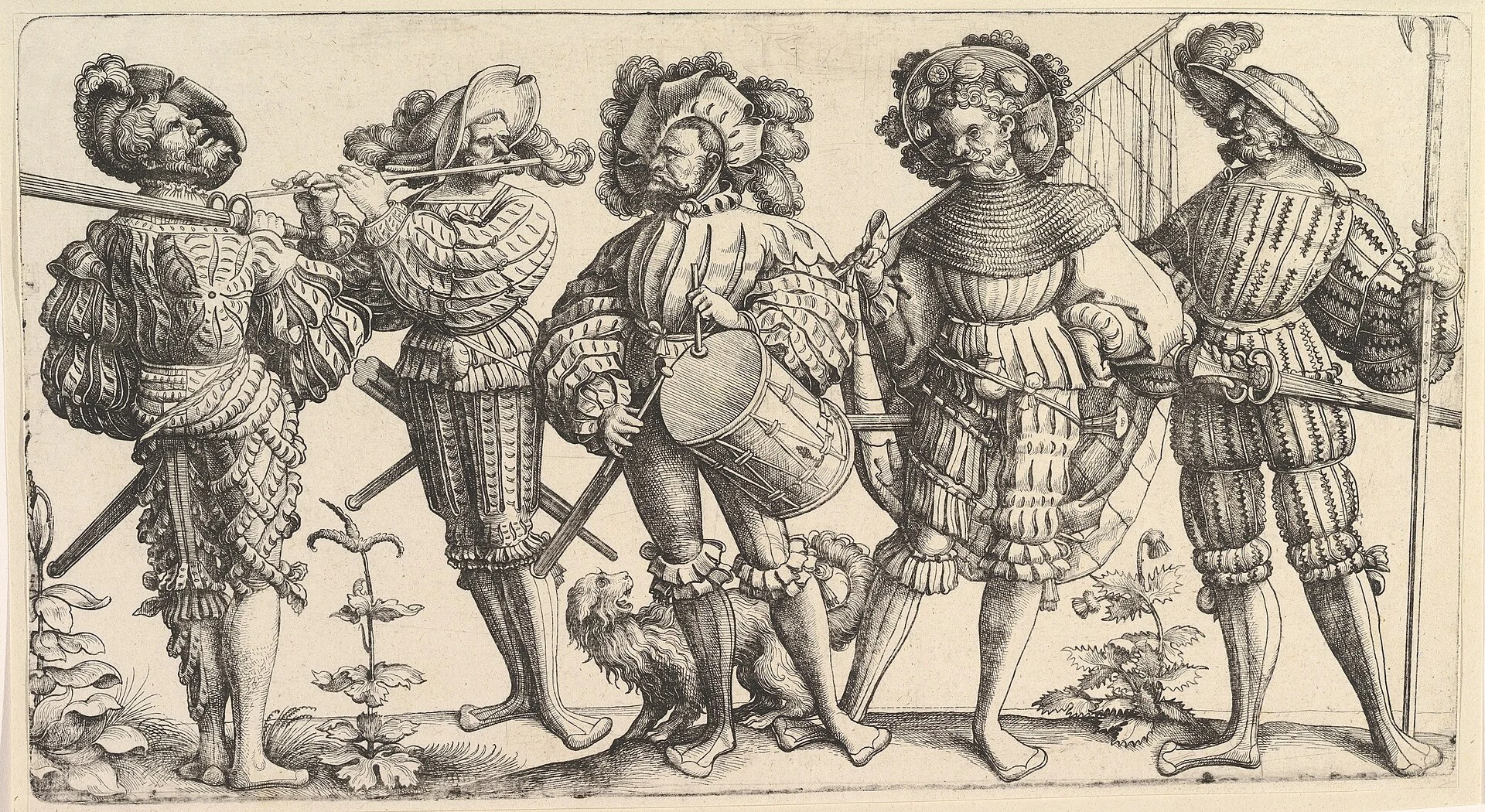
The Landsknechte were German mercenaries used in pike and shot formations during the early modern period. Consisting predominantly of pikemen and supporting foot soldiers, their front line was formed by Doppelsöldner ("double-pay men") renowned for their use of Zweihänder and arquebus. They formed the bulk of the Holy Roman Empire's Imperial Army from the late 15th century to the early 17th century, fighting in the Habsburg-Valois wars, the Habsburg-Ottoman wars, and the European wars of religion.
The Grand Canyon of the Yellowstone- Thomas Moran, oil on canvas (1872)


> Thomas Moran's vision of the Western landscape was critical to the creation of Yellowstone National Park. In 1871 Dr. Ferdinand Hayden, director of the United States Geological Survey, invited Moran, at the request of American financier Jay Cooke, to join Hayden and his expedition team into the unknown Yellowstone region. Hayden was just about to embark on his arduous journey when he received a letter from Cooke presenting Moran as "an artist of Philadelphia of rare genius". Funded by Cooke (the director of the Northern Pacific Railroad), and Scribner's Monthly, a new illustrated magazine, Moran agreed to join the survey team of the Hayden Geological Survey of 1871 in their exploration of the Yellowstone region. During forty days in the wilderness area, Moran visually documented over 30 different sites and produced a diary of the expedition's progress and daily activities. His sketches, along with photographs produced by survey member William Henry Jackson, captured the nation's attention and helped inspire Congress to establish the Yellowstone region as the first national park in 1872.
Joan of Arc at the Coronation of Charles VII- Jean-Auguste-Dominique Ingres, oil on canvas (1854)


> In 1851, M. de Guisard, the state's Director of Fine Arts, gave Ingres a commission of 20,000 francs for a painting of a subject of Ingres's choosing. Ingres offered instead to fulfill the commission by finishing two paintings already in progress, Joan of Arc and a Virgin with a Host. Both were subjects he had depicted in earlier works: he had made a wash drawing of Joan of Arc as a model for an engraving by Pollet that was published in the 1840s in La Plutarque français, Vies des hommes et femmes illustres de la France by E. Mannechet. The drawing shows her in a pose similar to that of the later painting, dressed in armor and resting her hand on an altar, but with no accompanying figures. > > For the painting Ingres made new preparatory drawings using a nude model. He then made drawings in which he added the clothes and armour. The final composition shows Joan at the coronation of Charles VII of France in Reims Cathedral, victorious and looking up to heaven, which she felt had given France the victory. To her right are three pages, the monk Jean Paquerel, and a servant. The servant is a self-portrait of the artist.
La Ville de Paris- Robert Delaunay, oil on canvas (1910–1912)

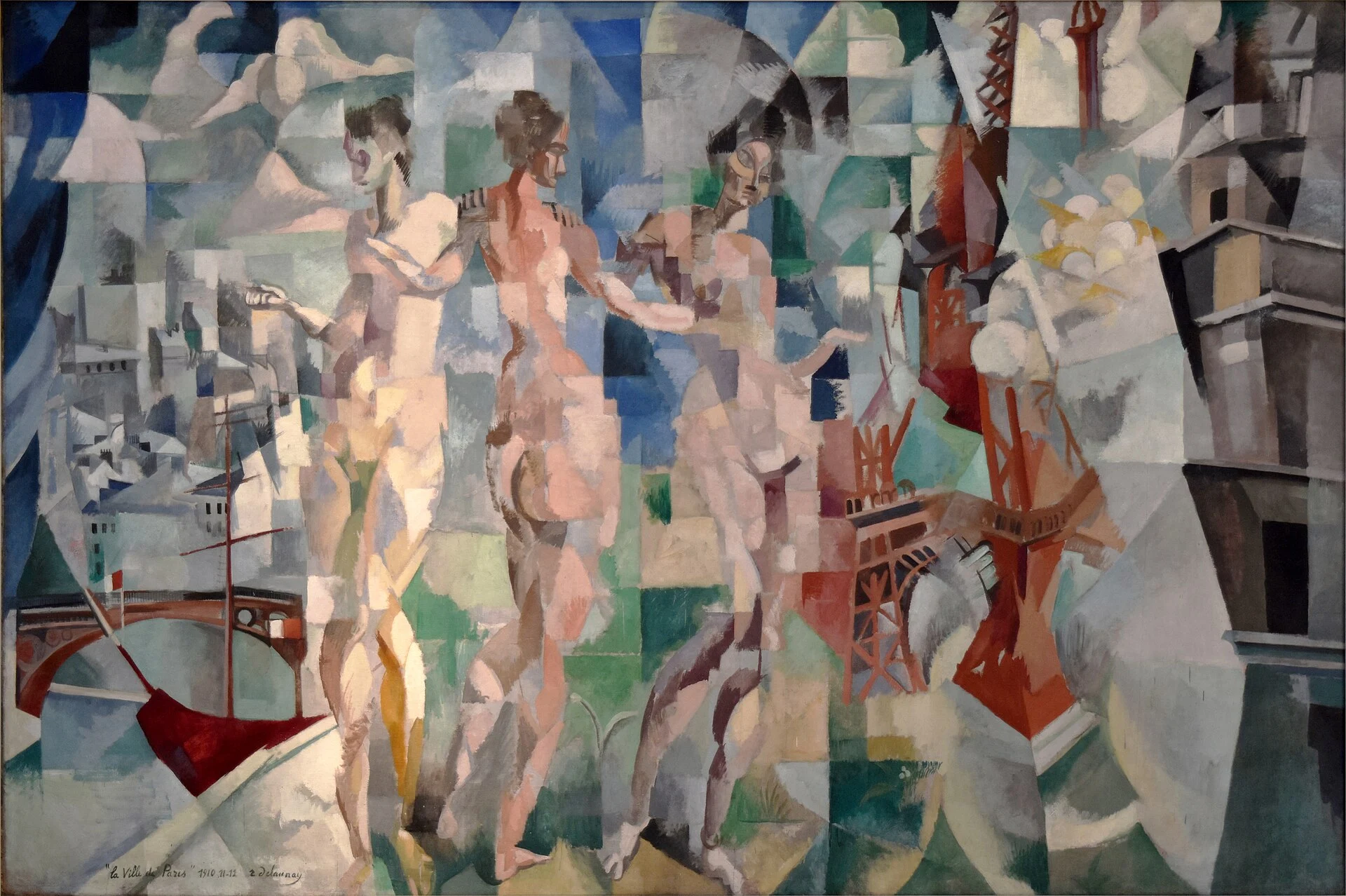
Robert Delaunay (12 April 1885 – 25 October 1941) was a French artist of the School of Paris movement; who, with his wife Sonia Delaunay and others, co-founded the Orphism art movement, noted for its use of strong colours and geometric shapes. His later works were more abstract. His key influence related to bold use of colour and a clear love of experimentation with both depth and tone.











